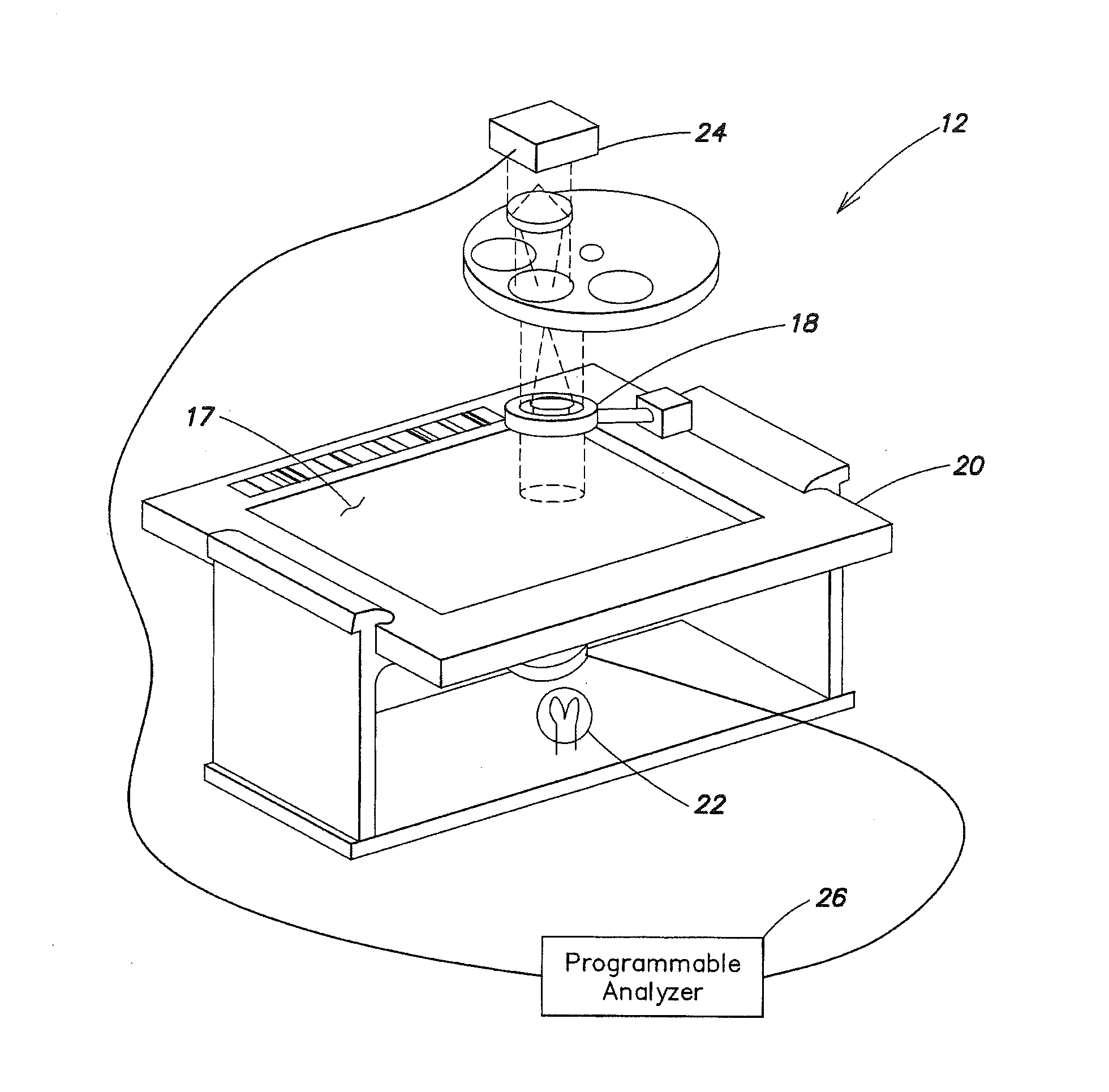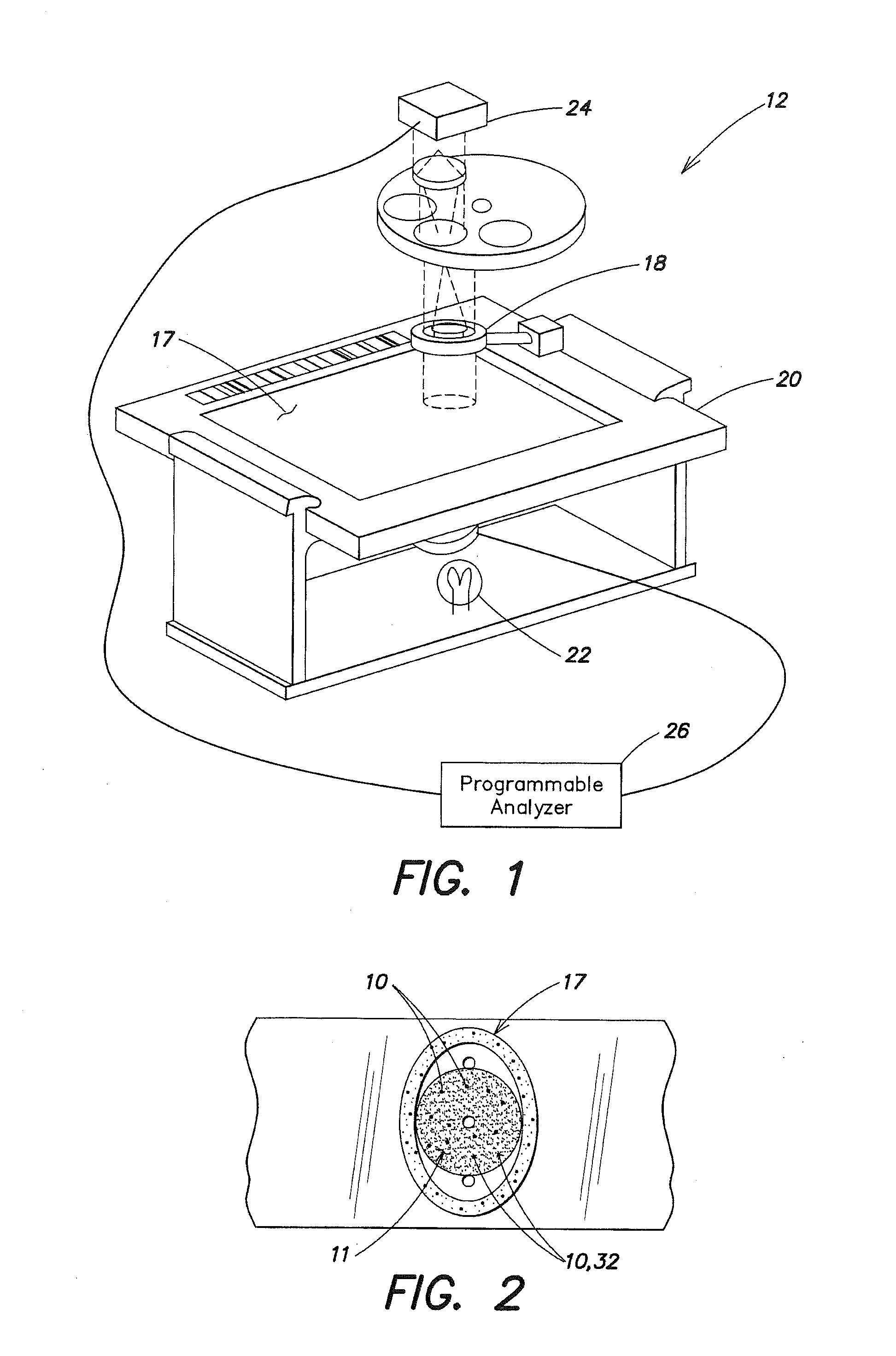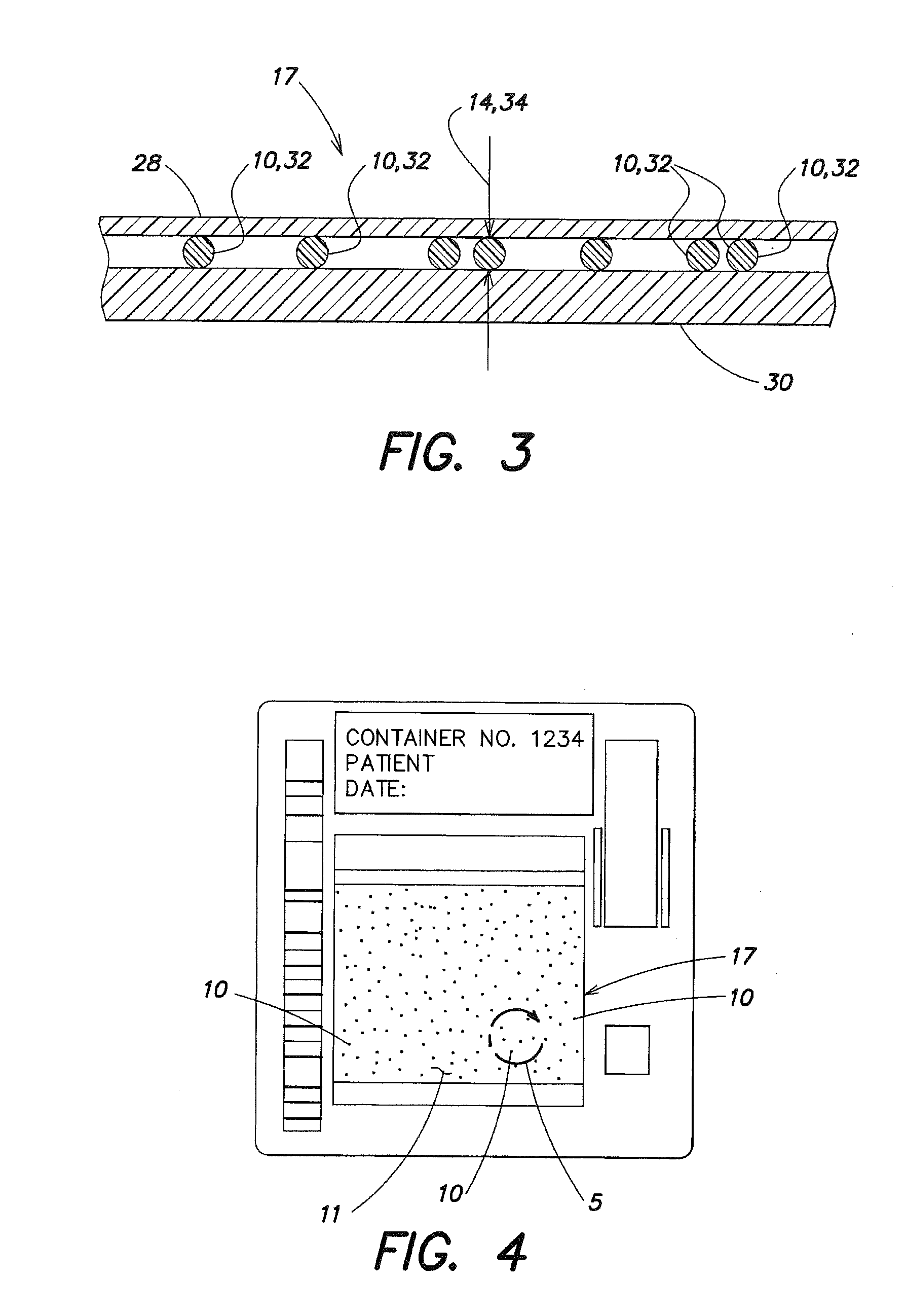Method and apparatus for determining a focal position of an imaging device adapted to image a biologic sample
a technology for imaging devices and biologic samples, applied in closed circuit television systems, instruments, television systems, etc., can solve the problems of inability to hold the mechanical tolerances of the sample holder to these dimensions, time-consuming multiple image processes, and inability to achieve the desired effect, and achieve the effect of more robust methods and apparatus
- Summary
- Abstract
- Description
- Claims
- Application Information
AI Technical Summary
Benefits of technology
Problems solved by technology
Method used
Image
Examples
example
[0034]The following is an illustrative example of focusing an imaging device 12 according to the present method. FIG. 8 provides a block diagram according to a method aspect of the present invention. The invention is not, however, limited to this example.
[0035]A sample 11 of biologic fluid (e.g., substantially undiluted anticoagulated whole blood), is deposited within a chamber 17. A number of lenslets 10 are positioned relative to the sample 11 in a manner such that they will remain at a fixed distance from the point in the sample 11 where best focus is required for the duration of the analysis. The number of lenslets 10 can vary depending upon the application, but there should be enough such that there are a sufficient number of lenslets 10 in each field of view to accurately practice the method (e.g., a number of lenslets 10 great enough so that statistically acceptable average light transmittance intensity values can be calculated, etc.). The lenslets 10 may be dispersed randoml...
PUM
 Login to View More
Login to View More Abstract
Description
Claims
Application Information
 Login to View More
Login to View More - R&D
- Intellectual Property
- Life Sciences
- Materials
- Tech Scout
- Unparalleled Data Quality
- Higher Quality Content
- 60% Fewer Hallucinations
Browse by: Latest US Patents, China's latest patents, Technical Efficacy Thesaurus, Application Domain, Technology Topic, Popular Technical Reports.
© 2025 PatSnap. All rights reserved.Legal|Privacy policy|Modern Slavery Act Transparency Statement|Sitemap|About US| Contact US: help@patsnap.com



